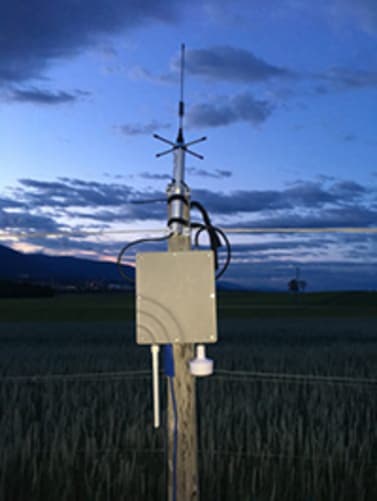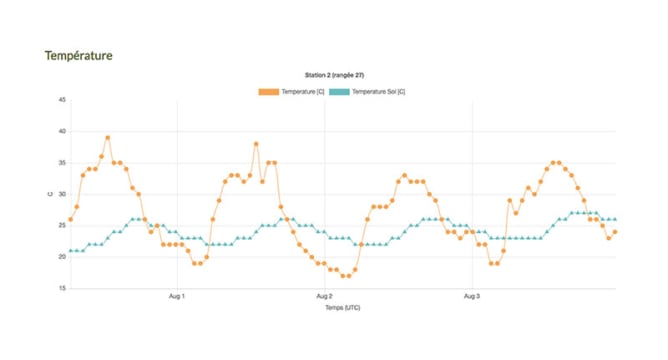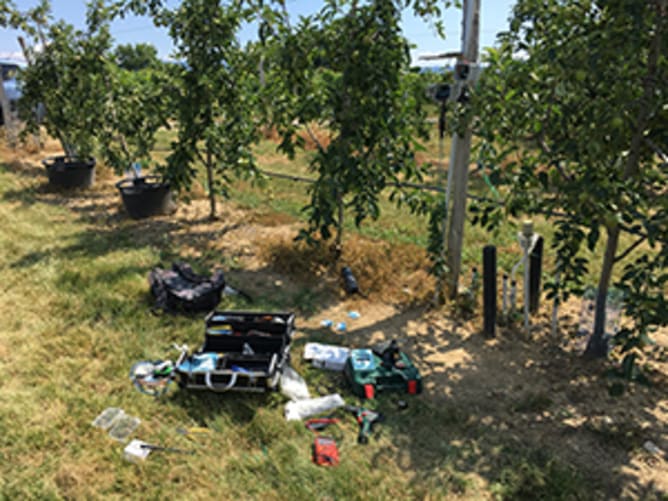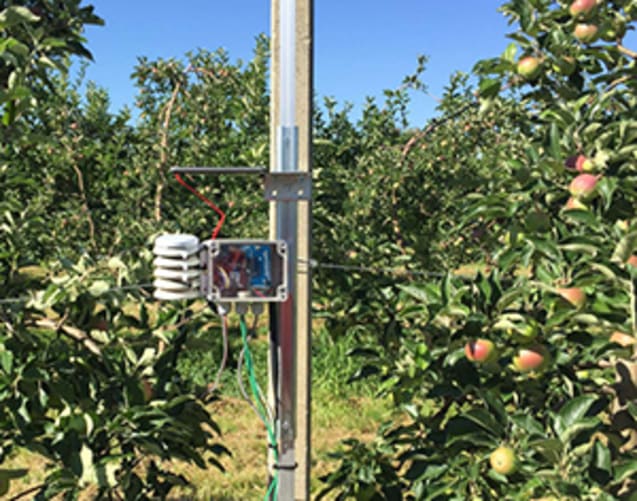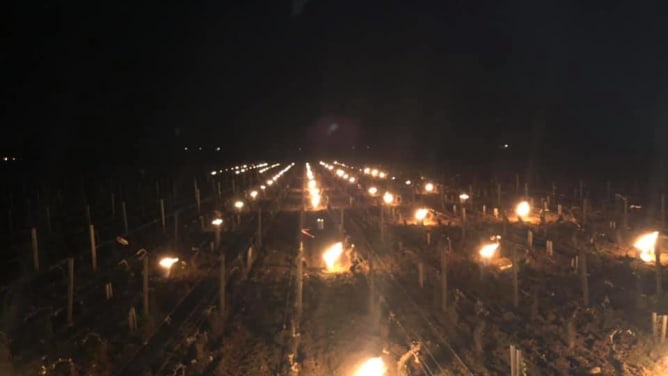
Real-time monitoring of bud temperatures
At the start of each growing season, when leaves and buds begin to emerge, crops are susceptible to damage from spring frost (or late frost). In particular, on calm, clear nights, long-wave radiation escapes to the much colder sky, which can lower the temperature of the buds well below that of the air. Condensation then occurs and, if it is cold enough, ice (called radiative gel) forms on the surface as well as inside the leaf or flower, which can be fatal for the future fruit. .
The objective of this pilot project is to offer a monitoring tool, in real time , to help owners to monitor the evolution of low temperatures, in order to act quickly, wherever necessary.
I will develop small stations of around thirty francs each which will be positioned in the foliage, and which will measure the temperature at different levels heights:
- 5cm in the ground below the surface
- 5cm above the ground
- 1m from the ground
- and 2m from the ground
- a final infrared sensor measuring the temperature of the bud or the foliage.
Finally, a larger station will measure
- solar radiation
- wind speed
- humidity and air temperature
Why my project will make your life easier
The special feature of this project lies in the technology used for data transmission. This protocol, LoRaWAN, makes it possible to follow the evolution of the temperature by zone in real time , and to be alerted when the temperature reaches a critical threshold. Thus, you can intervene immediately and even proactively, by observing the temperature curves provided by the application.
LoRaWAN is an increasingly used protocol in the transmission of data at low speed. Its particularity is based on the transmission of data by radio over several kilometers, but above all for its low energy consumption. A station can operate for several years with the same battery and transmit measurements to a gateway located within a radius of 3 to 12 kilometers (the configuration of the terrain plays a very important role in the range of transmissions) .
Building on a previous successful experience, in real-time monitoring of the water state of the soil, we will build upon this work to this experience to the new project, which will allow us to start on a very good basis, and above all to save considerable on development time.
Finally, this pilot project will be carried out with the collaboration of a winegrower, which already uses parafine lanterns so that the buds do not suffer damage from the spring frost. This collaboration is very important because it will allow to harmonize the application with professionals who already have a rich experience in the field while I will bring them the technology to facilitate their tasks.
What will your backing be used for?
From my previous project, I already have a lot of equipment, which will allow me to reduce costs. For example, I already have a gateway which represents a gain of a good hundred francs. I will use as much equipment as possible from my previous project but still need to finance:
- a pyranometer, to measure solar radiation (€ 187)
- a radiation frost sensor, which simulates both a leaf and a flower bud in a single probe, providing a direct estimate of these temperatures (€ 261)
- 6 to 10 small stations, to measure local temperatures (approx Sfr 20 per station)
- 2 stations that will measure wind speed, solar radiation and other measurements such as humidity and air temperature (Sfr 100)
- 24 to 40 waterproof sensors to measure temperatures at different levels, 4 per small station (max. Sfr 400)
- 6 infrared temperature sensors (approx. Sfr 40), to measure the surface of the leaves / buds
- A crimping tool JTS WC-620 (Sfr 440)
- For subsidiary purchases
It is still important to note that if the desired funds were to be exceeded, any surplus would be used to allow me to go further into the project with a possible technical or geographical extension in consultation with this or new site owners.




